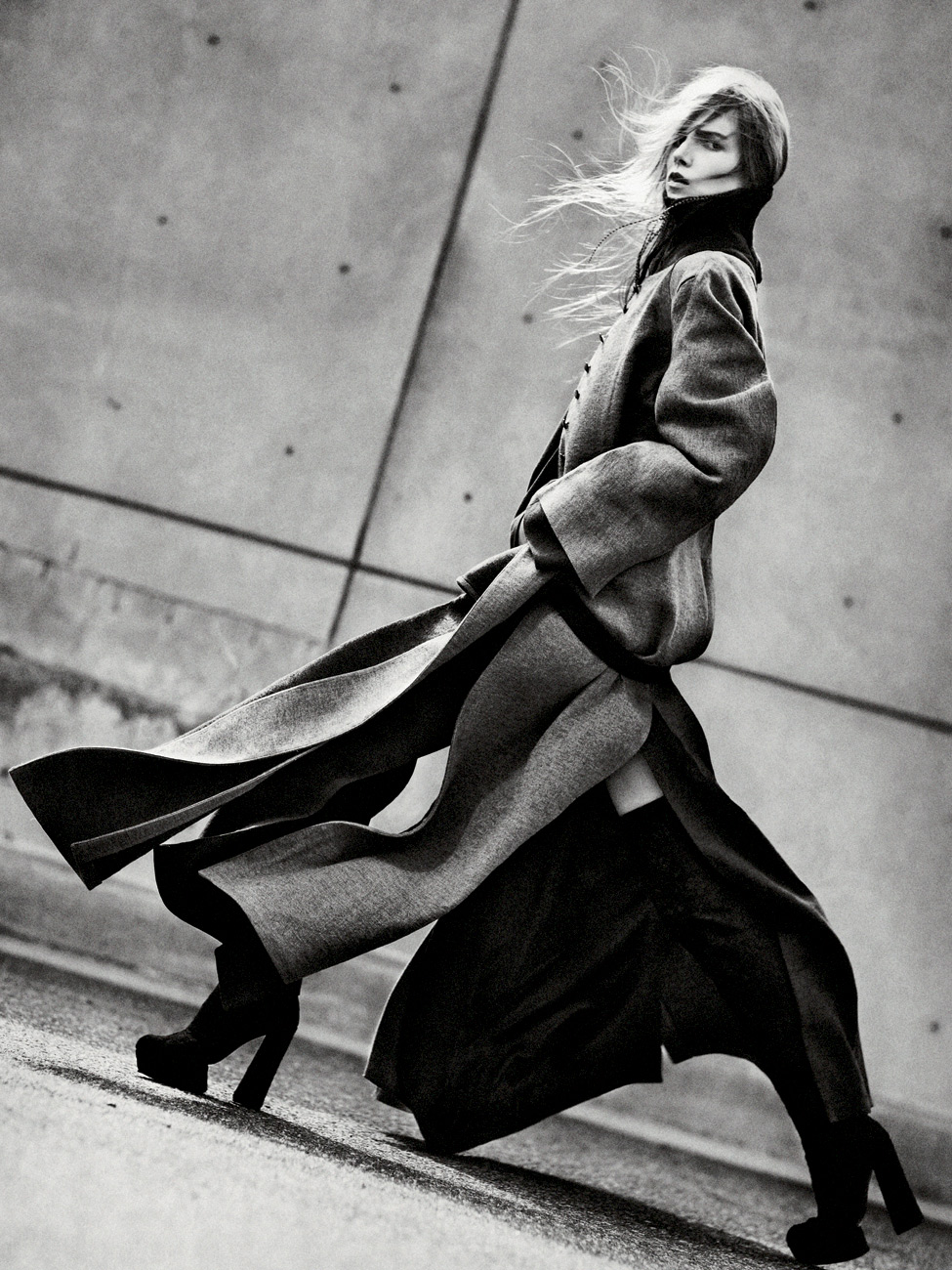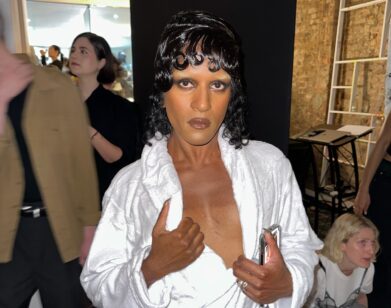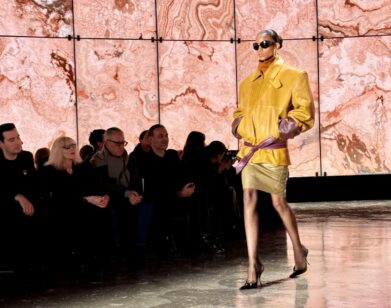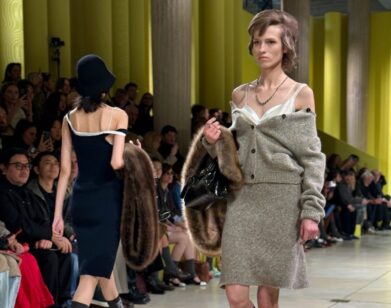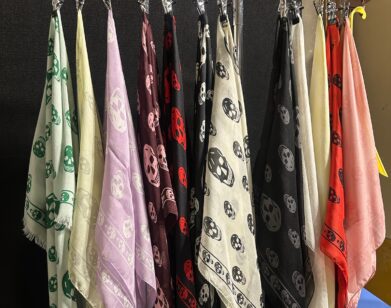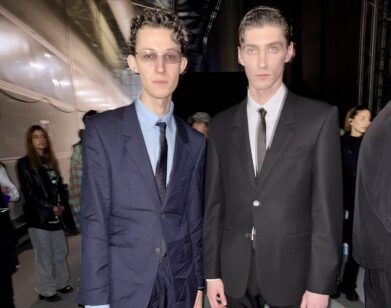Olivier Theyskens
Has Olivier Theyskens finally figured out fashion? Not the creative part—ever since Madonna wore one of his dresses to the Academy Awards in 1998, the world has been well aware of Theyskens’s considerable ability on that front. However, figuring out the business end of things has proved a little bit more tricky for the 34-year-old Brussels-born designer.
Theyskens dropped out of the prestigious La Cambre school of visual arts in 1997 to start his own line, but it closed five years later when his financial backer dropped out—the same year he was hired by Rochas, where he won widespread critical praise for his work. (He was given the Council of Fashion Designers Award in 2006.) But Procter & Gamble, Rochas’s owner, discontinued the line. Soon after, Theyskens became artistic director of Nina Ricci, and although he began adopting a more accessible style, he and the brand parted ways in 2009.
Then, last May, Japanese-owned, New York–based Theory invited Theyskens to create a capsule collection. Under the name Theyskens’ Theory, the line reflected his European, specifically French signatures but at a more financially democratic price point. As usual, his work received rave reviews. But perhaps most important, it sold. Theyskens was named artis- tic director of the brand five months later.
Earlier this spring, costume designer Milena Canonero stopped by Theyskens’s Paris apartment.
MILENA CANONERO: You have some beautiful art books—this one about Modigliani drawings is great.
OLIVIER THEYSKENS: Lately I’ve been thinking that I haven’t been to enough museums. I’m going through a phase where I don’t buy books as much.
CANONERO: It happens to me sometimes. There are moments when I resent even buying a book. But browsing is wonderful. I like to go and browse everywhere, even fashion shops. You can get influences from anywhere.
THEYSKENS: When I was young, watching historical movies made me feel absolutely sublime. But the first few times I visited costume museums, I was really disappointed because it was not at the level I saw in movies. It was not the level of the image I’d imagined.
CANONERO: The costumes in museums are often not exhibited well. They look dead. It is much better to look at a painting by Bronzino than to go look at a Renaissance costume.
THEYSKENS: Historical costumes from the 18th and 19th centuries look so complicated, but when you see the patterns, it’s very systematic. I’ve always been impressed by how the patterns economize the fabric.
CANONERO: Do you have a lot of pressure to know that the collection must be both successful commercially but also to say something, whether it’s about the modern woman or modern life?
THEYSKENS: Yeah, yeah. I am more used to seeing my work like a big collection, and only part of it is being shown.
CANONERO: How many pieces do you usually do for a collection?
THEYSKENS: The last collection in February that was shown in New York had maybe 140 styles.
CANONERO: How many do you show?
THEYSKENS: It depends. One time I made a collection where I showed almost nothing but dresses. I would have almost 60 styles of clothes, and beyond that, I would have 80 more commercial kinds that would link to the collection but be more practical.
CANONERO: Who are the more obvious clients for haute couture? American women? French women? I’ve heard Arab women spend a lot of money on their clothes, which they usually wear in private.
THEYSKENS: It’s hard to say. I’ve never been involved in a brand that is couture. Even when I started at Rochas, for 50 years there was no fashion. So you had no clientele. We were starting from zero.
CANONERO: You like to be influential—not necessarily telling people what they should look like, but how we look in this modern world. Do you like to feel you have an input?
THEYSKENS: The aim of being a good designer is to have an influence. If you design furniture or lifestyle, you should influence the way people evolve globally. It’s good to have an influence. I feel like people on the street today probably dress better than they did in the ’50s.
CANONERO: When you were growing up with your family in Brussels, did your mother enjoy fashion or encourage you in that way?
THEYSKENS: My mother loved fashion and always had a great aesthetic. But she also considered the cost of it, with the kids, that it wasn’t something to allow herself. It also probably nourished my passion and my will to make fashion, because I’ve always felt that, because of having a big family to take care of, she sacrificed a bit of her femininity. She loved to get dressed and always loved these Parisian perfumes. But there was always a limit, you could tell. I could feel it.
CANONERO: Now she can have beautiful clothes.
THEYSKENS: No, she doesn’t even have one. She’ll probably have some from Theory, because Theory is more for everybody. This is also something that stim ulates me a lot, because I have this edgy, fashion-y part, but I am also totally involved with a brand that is about how people dress, and what they want. And it’s a whole other look you can have on the street. It’s exciting because it speaks to the other part of my job and what my passion is. A designer wants to make something useful for as many people as possible.
CANONERO: You were saying that you do two collections—one that you call ready to wear and one is—
THEYSKENS: Everything I have is ready to wear, but I have the ability to have different options within the same brand. I have the Theyskens’ Theory col- lection where it’s a personal approach to how I build the collection where I fuse more fashion-y ideas and it has my name on it. So it’s really something very research- and labor-intensive. And then I have the Theory brand where I infuse all points of view about fashion at large, and it’s more global. It’s really about making something succeed. You have an instant relationship with stores, and with sales teams, and people that are in the place.
CANONERO: You work in New York, but you also keep your place here in Paris.
THEYSKENS: Yeah, I love to be in New York. And I think anybody who’s a designer, who says they’re doing an urban collection, thinks about the streets of New York. I cannot do an urban collection thinking of Bangkok. [Canonero laughs] Or Mexico. To me, it’s totally instant, totally connected with what attracts me these days. But this resurgence of a modern, cool way of being dressed is something that stimulates me and is totally right for me. Even now I don’t like to show something that is some futuristic utopia.
CANONERO: I can’t plan too far ahead. It’s one of the things that gives me a lot of pleasure, to just go into a new movie. And do different things every time.
THEYSKENS: What is funny is when you do a futuristic movie, you immediately get to be fashionable because you’re creating something that doesn’t exist.
CANONERO: Shoes are what really hit you as being indicative of the times.
THEYSKENS: The only shoes that look futuristic are Crocs, but they would be terrible to use in a futuristic movie.
CANONERO: It can be very wrong.
THEYSKENS: It can be so wrong. [laughs]
CANONERO: And it can be very dated.
THESKEYNS: I would love, just once, to do costumes for a movie. I almost did some theater, but it is very different from what I am used to doing as a fashion designer.
CANONERO: Oh yes, it’s really different. When you do your collection, you are much more free. You have fewer boundaries. When you work on a movie, you have to take into consideration the story, the plot, the vision of the director, even the phy- sique of your cast. And then on top of all this, you want your imagination, your taste, and your ideas to come through. But a movie is forever.
THEYSKENS: I don’t like to go beyond modernity because you think girls might be like that in five years, but in five years what I see now is going to be old; we are always going to go somewhere else. You have to bring a few novelties within what will remain.

